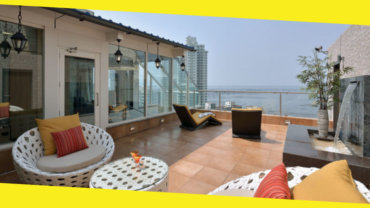9 Routes Offered To Affordable Housing

Getting a shelter to dwell in is the dream that every individual wants to fulfill in his life. However, the skyrocketing cost that it carries shatters the dreams of many, especially the one belonging to the middle and low-class strata. Indeed the economically weaker sections are compelled to stay in a rented house for the rest of their lives. In the wake of such a scenario, affordable housing backed by the government of the different countries and shared housing by providing rooms for rent by citizens themselves become a ray of hope for millions.
The general definition refers to the housing units that can be purchased by a section of the society whose monthly income is average. Almost all the countries in the world address the housing needs of the median-income group people through various affordable housing solutions and schemes. This problem of housing is identified in the developed and developing countries, where the bulk population is not able to sustain housing provision at market prices.
The disposable income that is left in the hands of the people becomes the key factor in establishing affordability. Due to this reason, there is an additional responsibility for the government, to cater to the rising demand for housing at affordable ranges for the citizens of the country. The government takes several measures so that affordable housing schemes are available for this particular class of people.
These routes can be navigated to support affordable housing:
Contents
Toggle1. Zoning
The term ‘zoning’ refers to the given set to rules and implications prescribed by the government to the use of urban and suburban areas. In a more severe aspect, we can relate it with the word “Euclidean zoning” which was used to differentiate the buildings based on its usage. Under this Euclidean zoning, a given plot of land was kept aloof for the use of office buildings, residential complexes, shopping malls, industry, and others. There were even zoning codes to determine the shape of the building and activities involved around it. If zoning codes are created for affordable housing, then the problem is sure to get some solution in the future.
2. Inclusionary zoning
What is becoming the vogue over the recent years are the inclusionary zoning (IZ) ordinances measures directed towards the affordable housing. In this inclusionary zoning approach, specified units of shares are kept aside for families belonging to income thresholds ( basically the area median income) at a price that is sustainable for them. This scheme also aims to preserve economic diversity in an area.
3. Non-gentrification
The notion regarding gentrification might vary from an individual to another individual. However, it generally refers to a phenomenon where the higher-income strata and the retail outlets that cater to their needs move into the locality that was earlier subjected to lower-income households. The process not only causes a nuisance to a community but also dislodges the original inhabitants from their residential sectors. Therefore, gentrification should not be promoted at any cost. Rather non-gentrification practices have to be implemented where more poor people should be included in the local neighborhoods.
4. Filtering
This proposal is somewhat opposite to the concept of gentrification. As an age-old structure matures, it becomes obsolete, degraded and goes out of fashion and filter down in value. This is true in case of residential housing and complexes. Whenever any new building construction projects start, the share of the older building will eventually filter down in the economy, making the housing provisions affordable for the lower-income groups.
5. Prohibiting exclusionary zoning
While inclusionary zoning measures helps to promote affordable housing schemes for middle-income dwellers, the exclusionary zoning is completely the opposite. It is illegal for low-income people to reside in the town, or locality in exclusionary zones. These measures unintentionally, or deliberately aim to make housing much expensive for economically weaker section. A housing with a proper parking lot also serves the purpose of exclusion as houses without any vehicle belongs to the majority of low-income group.
6. Developing new luxury projects
Developing luxury projects include constructing real-estates that are high priced and are targeted for affluent individuals, including the millionaires of the country. As the number of projects increases, the developers need to tap the potential customer base. These luxury projects can address the requirements for affordable housing scarcity. The richer section will invest more in these projects leaving other residential blocks for middle and low-income people.
7. Section 8
The repeatedly amended ‘Housing Act of 1937’ has a section 8, which emphasizes on the Housing Voucher Program. The idea of section 8 is relatively simple, where instead of spending money on housing schemes, the government offers a voucher that incorporates all the cost of homeownership beneficiaries. Most importantly, low-income families can decide for themselves the building location, quality, pricing, and other associated aspects.
8. Scattered site housing
Scatter sites housing are spread throughout the diverse middle-class neighborhoods. The scatter site housings are funded from public money which provides affordable accommodation. These can form single units or clustered units of families. Non-profit organizations mainly manage these projects as supportive housing models for the targeted middle and low-income individuals and families.
9. Empty plots can be used for housing
Many activists who are working in favor of affordable housing solutions pointed out about the viable use of empty plots. They pointed out many such areas and neighborhoods that retain such vacant lots that can be brought to productive use by providing affordable housing options to the weaker section of the society.
Affordable housing projects is a fair solution that can work towards the problem of providing housing to every stratum of society. Besides this, the objective of affordable housing should also entail health and safety, attractive amenities, better education system, commuting and connectivity, infrastructural growth and others.
Recommended For You
What Is Cost of Penthouses In India?
Most Inside
Most Inside offers high-quality recommendations and valuable updates to enhance all aspects of your life, providing premium guidance and enriching experiences.




